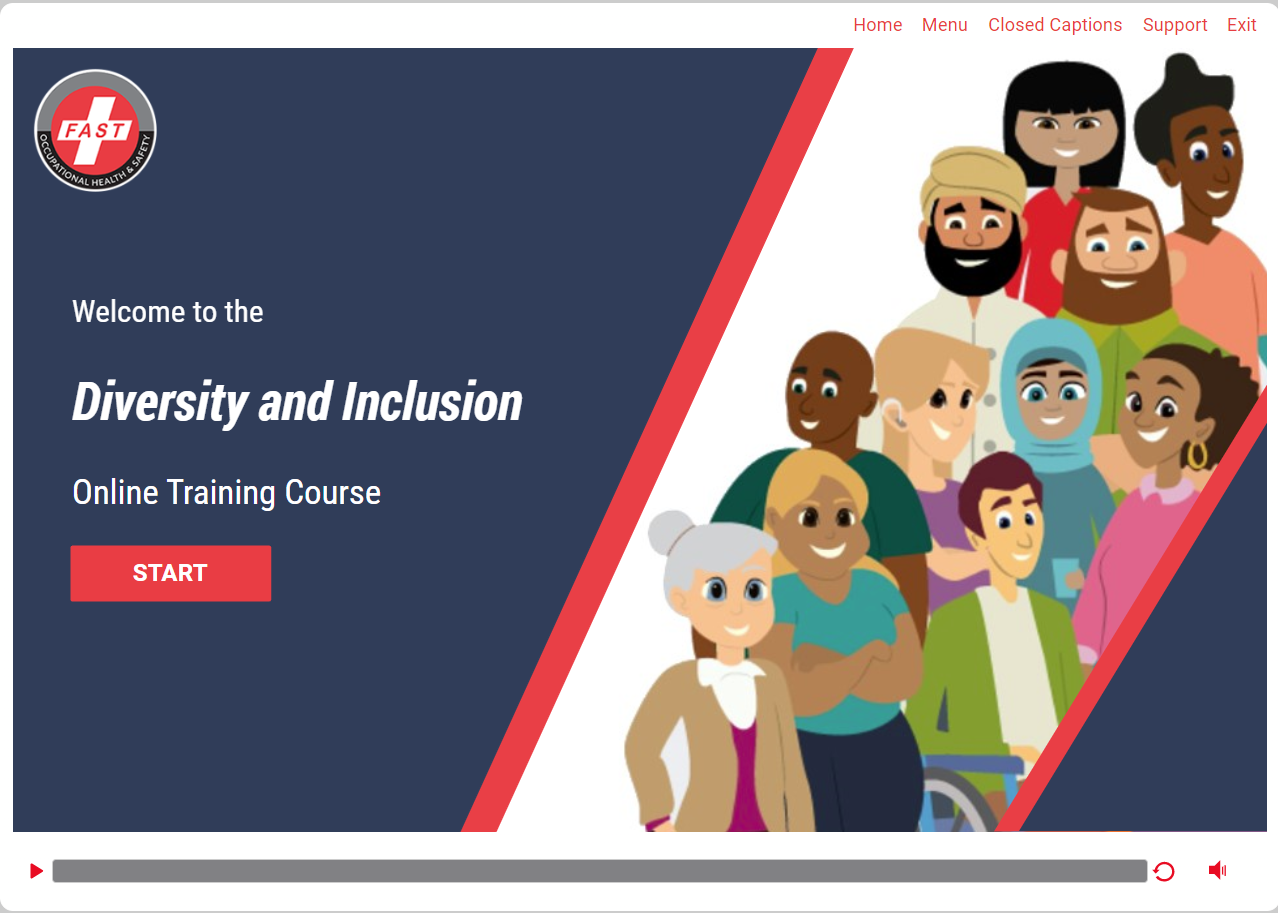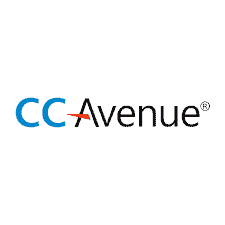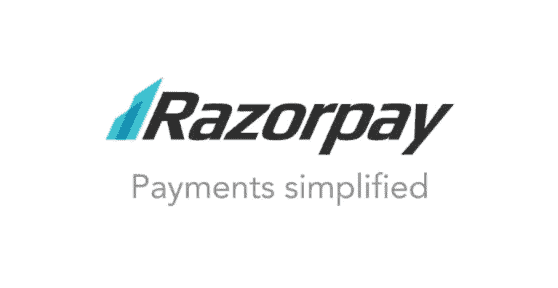
Diversity and Inclusion Online Training Course
(E-HRDI-E)
Introduction to Diversity and Inclusion Online Training Course
Occupational Health and Safety (OHS) – Diversity and Inclusion Training Online Program
The “Diversity and Inclusion” module is fully narrative and AODA-Compliant. The information presented in the module is accurate, precise, and easy-to-comprehend.
Upon completing the module, learners will take a final test to assess their comprehension. This test is a requirement for successfully finishing the training.
A convenient feature of the course is the ability to pause at any point, with the course reminder automatically saving your progress and allowing you to easily resume where you left off when you return.
DIVERSITY AND INCLUSION TRAINING ONLINE COURSE OUTLINE
The course covers the following topics:
1. INTRODUCTION
This introductory chapter describes how an inclusive work environment plays a significant role in making a friendly work environment. This chapter provides brief yet informative and productive knowledge about the significance of diversity and inclusion in the workplace.
2. WHAT IS DIVERSITY?
Diversity refers to the presence of a variety of differences among individuals, including but not limited to factors such as race, ethnicity, gender, age, sexual orientation, abilities, and cultural backgrounds. In this chapter, you will learn about diversity, its significance in the workplace, and how organizations will get benefitted from it. All the information is presented in a concise manner using relevant images along with an example to give learners a sense of understanding about the diversity.
Also, learn the various differences between an individuals that are presented in an appealing and easy-to-comprehend manner, and this differences is what makes a diverse workforce.
3. WHAT IS INCLUSION?
Inclusion refers to the practice of creating an environment where all individuals, regardless of their differences, feel welcomed, respected, and valued. This chapter describes how inclusion in the workplace can result in a supportive, collaborative, and respectful environment. Learn briefly about the significance of inclusion in the workplace along with a relevant image.
4. DIVERSITY AND INCLUSION
Diversity and inclusion go together, but they mean different things. Diversity is about what makes up a group. Inclusion is how much we value and include the ideas and perspectives of different groups. In this chapter, you will learn about the diversity and inclusion in detail along with the relevant images. Basically, this chapter focuses on fostering a culture where everyone is safe, welcome, respected, supported, and encouraged to streamline diversity and inclusion in the workplace.
5. BARRIERS AND CHALLENGES
Barriers and challenges refer to obstacles or difficulties that make it harder for something to happen or for someone to achieve a goal. Learn how to overcome barriers and challenges in the workplace by considering the following:
1. Biases and Attitudes
2. Communication
3. Company policies
4. Workplace practices
6. WORKPLACE - BIASES
Workplace biases are unfair judgments or opinions that people may have about their colleagues based on factors like race, gender, or other personal characteristics. In this chapter, you will learn about biases, unconscious biases, and how they can lead to discrimination, fear, anxiety, and a toxic work environment. Also, an example is given regarding biases to give learners a clear sense of comprehension.
7. WORKPLACE – ATTITUDES
Workplace attitudes refer to the feelings, opinions, or outlooks that individuals have toward their work environment, colleagues, and tasks. Learn about one of the largest barrier in the workplace that can lead to a very toxic workplace i.e. attitude.
8. WORKPLACE – COMMUNICATION
Workplace communication involves the exchange of information, ideas, and messages among colleagues within a work setting. This chapter describes how communication can be the greatest strength and biggest weakness if not done respectfully. Learn about the communication
challenge, learning barrier, and how poor or disrespectful communication can be detrimental to the workplace.
9. COMPANY POLICIES
Company policies are the rules and guidelines set by a company to govern the behavior, actions, and practices of its employees. In this chapter, you will learn about the company policies that are written and implemented in an inclusive manner for better functioning of the workplace.
10. WORKPLACE PRACTICES
Workplace practices refer to the established methods, routines, and behaviors that shape the way work is conducted within an organization. This chapter describes that people should not get excluded from work-related activities because of their personal situations.
11. USING INCLUSIVE LANGUAGE
Inclusive language is not about restricting free speech or adhering strictly to political correctness. It’s about communicating in a way that is easy to understand, respectful, and makes everyone in your audience feel valued and empowered. In this chapter, you will learn about using inclusive language and how it can reflect prejudice, stereotypes, or discriminatory viewpoints.
Using inclusive language plays a significant role in maintaining a friendly and stress-free work environment. The ways of using inclusive language are presented in the tabular form where one column present the language to avoid, while other describes the language to consider.
In this chapter, the following has been described briefly using relevant images and precise information.
1. Marital or Family Status
2. Examples of inclusive language for marital or family status
3. Culture and Ancestry
4. Culture and Ancestry preferred terminology using example
5. Disability
6. Example of Inclusive language for disabilities
7. Sexual orientation, gender identity or expression
8. Age
12. USING INCLUSIVE IMAGERY
Inclusive imagery means choosing visuals that embrace diversity, making sure everyone feels represented and included, regardless of their background or identity. A picture is worth of thousand words!
In this chapter, you will learn about using inclusive imagery to be inclusive and diverse. The detailed yet productive information is given along with relevant images and examples to provide learners’ with a clear sense of comprehension.
13. PERSPECTIVE
In this chapter, you will learn about perspective and how it can be challenging to understand what someone else goes through on a daily basis. Learn in detail about perspective using relevant yet informative imagery.
14. HOW DOES IT MAKE YOU FEEL?
This chapter covers an academic story of an indigenous Canadian girl named shae followed by an activity to let know how it makes you feel after listening shae’s accounting experience.
15. SET GOALS
Setting goals involves defining specific, measurable, achievable, relevant, and time-bound objectives to guide efforts toward a desired outcome. In this chapter, you will learn how to set SMART (Specific, Measurable, Achievable, Relevant, and Time-bound) goals in order to reach peak levels along with an example.
The information is presented in an easy-to-comprehend manner along with relevant images and productive info.
16. RESPECT IN THE WORKPLACE
Respect in the workplace means treating your coworkers, supervisors, and team members with politeness, consideration, and dignity. This chapter describes the importance of respect in the workplace and how it is significant to treat everyone with respect and dignity.
Learn briefly about using inclusive language and ways of behaving respectfully to encourage a positive, and respectful work environment.
17. PUTTING IT TOGETHER IN DIVERSITY AND INCLUSION
Putting it together in Diversity and Inclusion means combining efforts to create an inclusive environment that values diversity and ensures everyone feels included. This chapter covers the overview of the module “Diversity and Inclusion” or can say this chapter provides the moral of the entire module in an efficient manner.
18. REFERENCES
Here, references are given that relates to the module “Diversity and Inclusion”.
19. FINAL TEST
Lastly, at the end of the module, learners are provided with the final test to gauge their understanding. The final test questions are either in the form of MCQs or choosing the correct answer.
- Diversity and Inclusion
- Download Certificate
Student Reviews
Feedback from students who have taken this course.

